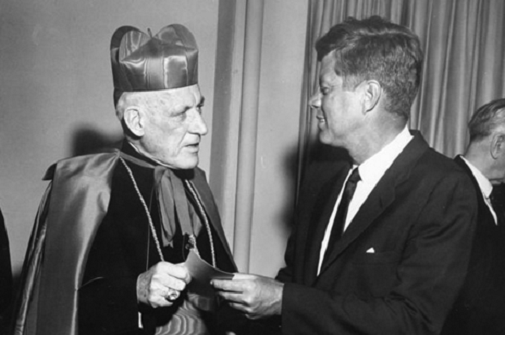
Cardinal Cushing remembers: “Twice, I saw Jack Kennedy cry.”
By: Bela Kornitzer, Author
Richard Cardinal Cushing, Archbishop of Boston, stood in the second-floor bedroom of his residence, where he rarely receives visitors. He was shaken as he reminisced about his young friend, Jack. This bold, frank man moved toward a dresser and rather cryptically reached into a drawer, took out a neat little box and opened it gingerly. From it, he took out a small metal plate suspended from a long chain. “Jacqueline Kennedy presented it to me, simply and without ceremony, as I started to join Joseph P. Kennedy on a boat ride in Palm Beach after Mass,” he said. “As I was about to enter the boat, Mrs. Kennedy stepped forward and said, ‘I have a memento of Jack for you. It is his dog tag, and I want you to have it.”
The Cardinal read the inscription: Kennedy, John F., Commander in Chief of the Armed Forces. There was also the letter O, which would have told the medics his blood type if he had been wounded, and the words: Roman Catholic. These final two words made the dog tag unique, the cardinal said, since they identified the one man in American history who was both a Roman Catholic and President – and therefore Commander in Chief of all of the armed forces.
“She could not have given me anything more personal and more meaningful,” the Cardinal said, “because I loved the man, and I know that he loved me. May God be good to him.”

The Cardinal remembers Kennedy as a student at Harvard, a Naval officer in the Pacific and a veteran who decided to run for Congress, although he had trouble at first standing on a public platform and speaking extemporaneously. A wedding, a baptism, an inauguration, the burial of an infant son and finally the slow march ahead of the flag-draped coffin – all of these events come back to the Cardinal’s mind as he recalls Jack Kennedy.
The memory is as fresh and green as the shamrock of the island from which both the Cushings and the Kennedys came. The Cardinal looked upon Kennedy as a Presidential possibility even before that first election to Congress. He used to introduce him to audiences at charity and Church functions during Kennedy’s races for the House and the Senate. But played no part at all in the 1960 Presidential campaign, although he twice offered to help clear up misunderstandings that he though he thought might hurt Kennedy.
Once, eager to silence whispering among Roman Catholics that Kennedy was not a practicing Catholic, the Cardinal drew up a statement denying that charge, and submitted it to the candidate and his father for their approval. “To their undying credit, they said, “Don’t publish it.” the Cardinal recalls.
A national magazine asked the Cardinal to write an article on the question of a Catholic serving as President. He did, and submitted a rough draft to the candidate. Kennedy telephoned him back to tell him that it was the best article of the kind he had read, then added, “But I don’t want you to get involved. So forget the whole thing.” Kennedy asked him, “Say a prayer for me and leave the rest to the Lord.” The Cardinal then withdrew the article.
Kennedy meet the political issue of his religion in his own way, the Cardinal days. “He gave his honest opinion: Here I am; this is what I believe. I am the nominee of the Democratic party. I happen to be a Catholic. I am responsible for my conduct in that religion, but as President of the United States, I am obligated to the Constitution.”
When Kennedy was elected, “inside” rumors circulated about Cardinal Cushing’s decisive influence on the first Catholic President. These caused the Cardinal much anguish. He did not offer the President political advice, but he did offer what help he could in moments of both personal tragedy and national crisis.
“I saw Jack Kennedy cry twice,” the Cardinal recalls. I cannot tell you the second time that I saw him cry. The first time was the day that I held the burial services for Patrick Bouvier Kennedy, his little boy. The services were held in the chapel of the Archbishop of Boston. There were helicopters, Secret Service men, telephones all over the place, telephones at the cemetery – because wherever the President is, there is the White House.
I offered what we call the Mass of the Angels in memory of little Patrick, who died 39 hours after birth. At the end of the Mass, I read a prayer that I wrote that I thought would be a source of consolation to the mother, for she had now lost three children.
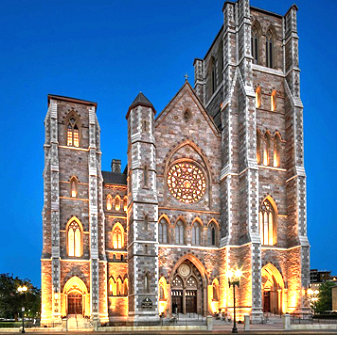
“When the ceremony was over, the Kennedy family left the little chapel. There were only about 14 or 15 present, since the chapel only seats 18. The late President preceded me, as I was the last one to leave the chapel. He put his arm around the casket of little Patrick Bouvier Kennedy. He even tried to take it with him! And he wept. I was behind him and said, ‘My dear Jack, let’s go, let’s go. Nothing more can be done,’ and I could not help weeping with him in this moment.”
The Cardinal’s association with Kennedy, because of its spiritual and religious nature, brought to light facets of character hardly discernible to others. Perhaps not even John F. Kennedy’s immediate family was aware of all the emotions a man reveals only to his religious advisor. “I don’t think the late President would want me to say that he was a very religious man,” the Cardinal observes reflectively. “ As a matter of fact, I wouldn’t want anybody to say that I was a very religious man, because I was sort of a natural type... President Kennedy, since he became President, had become a prayerful Man…. I know that, after he assumed the office of President of the United States, he had many sleepless nights, and during those periods of sleepless hours, he would get up out of his bed and kneel down and pray. I think we had a President with one hand in the hand of God – but for some reason, God permitted him to be taken from us.”
The Cardinal has spent many hours remembering that tragic Friday in Dallas last November, and the days that followed. He recalls all the details of the afternoon on which the eternal flame was first lighted at Arlington. “I met Jacqueline, John-John and Caroline as they came upstairs of St. Matthew’s Cathedral,” he says. I kissed Jacqueline on both cheeks and gave her my heart’s full measure of condolence and sympathy.”
Millions felt a sense of personal comfort when, in leaving St Matthew’s, the Cardinal bent down and kissed Caroline and patted John Jr., on his head. He was seen whispering something to Caroline that that was, of course, not audible, and only the Cardinal and she knew what words were exchanged. It is noteworthy that, of all the assembled notables – the most impressive gathering of world figures in the history of the United States – it was little Caroline, that “shy little girl,” who attracted the Cardinal’s attention.
He remembers that moment. “When the Mass at St. Matthew’s was over, I saw little Caroline looking up at me. I don’t think she knew who I was – whom I represented. She was standing with John-John at her mother’s side, When I reached her, I bent down, and in my own crude way, and with my own graveled voice, I said, ‘Caroline, in memory of your dear Papa, you kissed me.’ And to my great surprise, because she is a very – or was at that time – a very shy child, she did. And Jacqueline said to me, ‘Thank you for calling him dear Jack.’
I followed the burial ritual of my dear friend, President John F. Kennedy, in total conformity, insofar as I possibly could, with the wishes of his wife,” the Cardinal says. “It is rather exceptional to have a Low Mass for a Catholic, but that’s what they wanted, and I was all for it because they were tired and, of course, they were broken hearted. We went to Arlington National Cemetery. I never knew anything about a 21-gun salute. I know nothing about blessing an eternal flame. I depended upon the Catholic chaplain of the military forces to guide and direct me, and from then on, I found out that I was on my own.
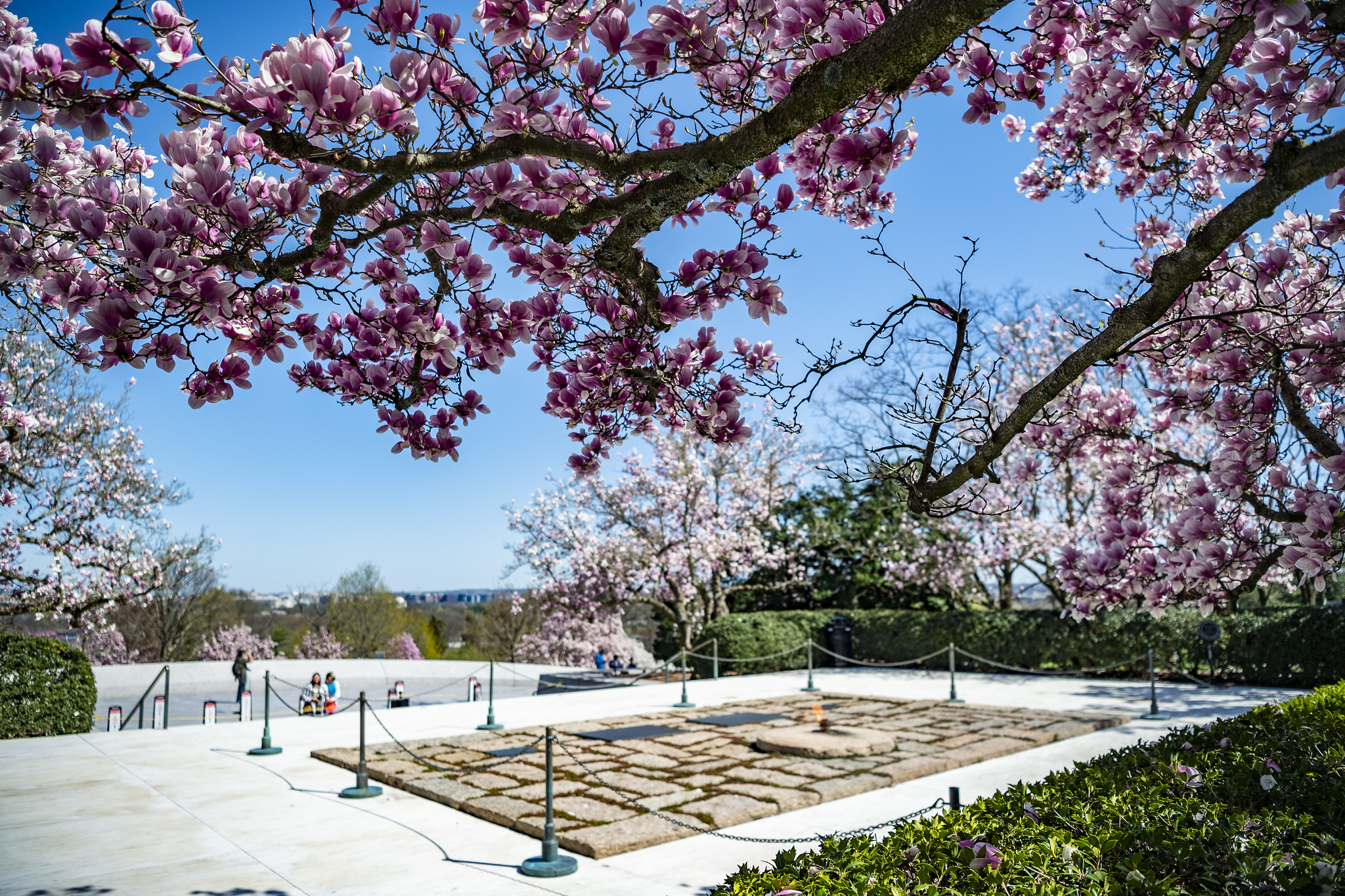
And I did the best I could. Since there was no blessing in the Catholic ritual for an eternal flame, I devised one on the spur of the moment. I gave what you would have called an extemporaneous blessing. When all that was over, I went to Mrs. Kennedy, Bob and Ted Kennedy, and I said, ‘If you want my advice, I wouldn’t have any other ceremonies.’ And Jacqueline said, ‘Your wishes are mine.’ And that was the end of it.”
The Cardinal would have preferred a more solemn ceremony such as the one he arranged on January 19 in Boston with the Boston Symphony Orchestra, but he suppressed his wishes to please the Presidents widow, who had definite ideas concerning the burial rites.
The Cardinal was of the focal figures of the funeral proceedings. Second only to the bereaved themselves. The people who massed the sidewalk of the capital, and the viewers of television, must have speculated: What possibly occupied the mine of the venerable prelate during his slow march ahead of the flag-draped coffin of his friend?
In the course of our discussion, I learned the Cardinal’s thoughts. A voice from the choir, for example, brought back the past. The voice was that of Luigi Vena singing Gounod’s Ave Maria at the special request of Jacqueline Kennedy.

The Cardinal was reminded that the same Luigi Vena sang the same hymn at the Marriage of John F. and Jacqueline Bouvier Kennedy in Newport, R. I., On September 12, 1953, a ceremony at which he had also officiated.
As the Cardinal led the long line of prelates down the aisle of the green-domed St. Matthew’s Cathedral, the memories of his association with the murdered President overwhelmed him. He thought of the occasion when he was summoned by the family in times of crisis, when spiritual consolation was needed. Looking at Caroline, he remembered that he had baptized her in New York’s St. Patrick’s.
Halfway down the aisle, he was moved by the familiar chords of another hymn. It is widely know and sung by Roman Catholic children in Massachusetts, and it is familiar to many of their parents and grandparents. The hymn was The Cross and the Flag, and the words and the music were written by his predecessor, William Cardinal O’Connell. This song John F. Kennedy himself may have sung as a boy in Boston, the Cardinal thought in deep melancholy.
He remembered also their last meeting, just a few weeks before the tragedy, when they signed a contract under which the President’s book, Profiles in Courage, would be televised, with all the profits to be turned over to one of the Cardinal’s charities.
And so his memories revolved, the sweet blending with the bitter. Later, he could think back to happier days, and he still recalls an incident with Caroline a the christening of Robert Kennedy’s eight child at Hyannis in 1963. During the ceremonies, Caroline – who was then five years old- was chattering constantly with her friends disturbing the service. “I had a white two-pointed miter on,” the Cardinal remembers, “and wore the proper vestments. I looked like Saint Patrick. Caroline probably thought I looked like Santa Claus. I turned in her direction and said ‘My dear Caroline’, if you don’t be quiet I’ll take up a collection, and the whole crowd will be dispersed.
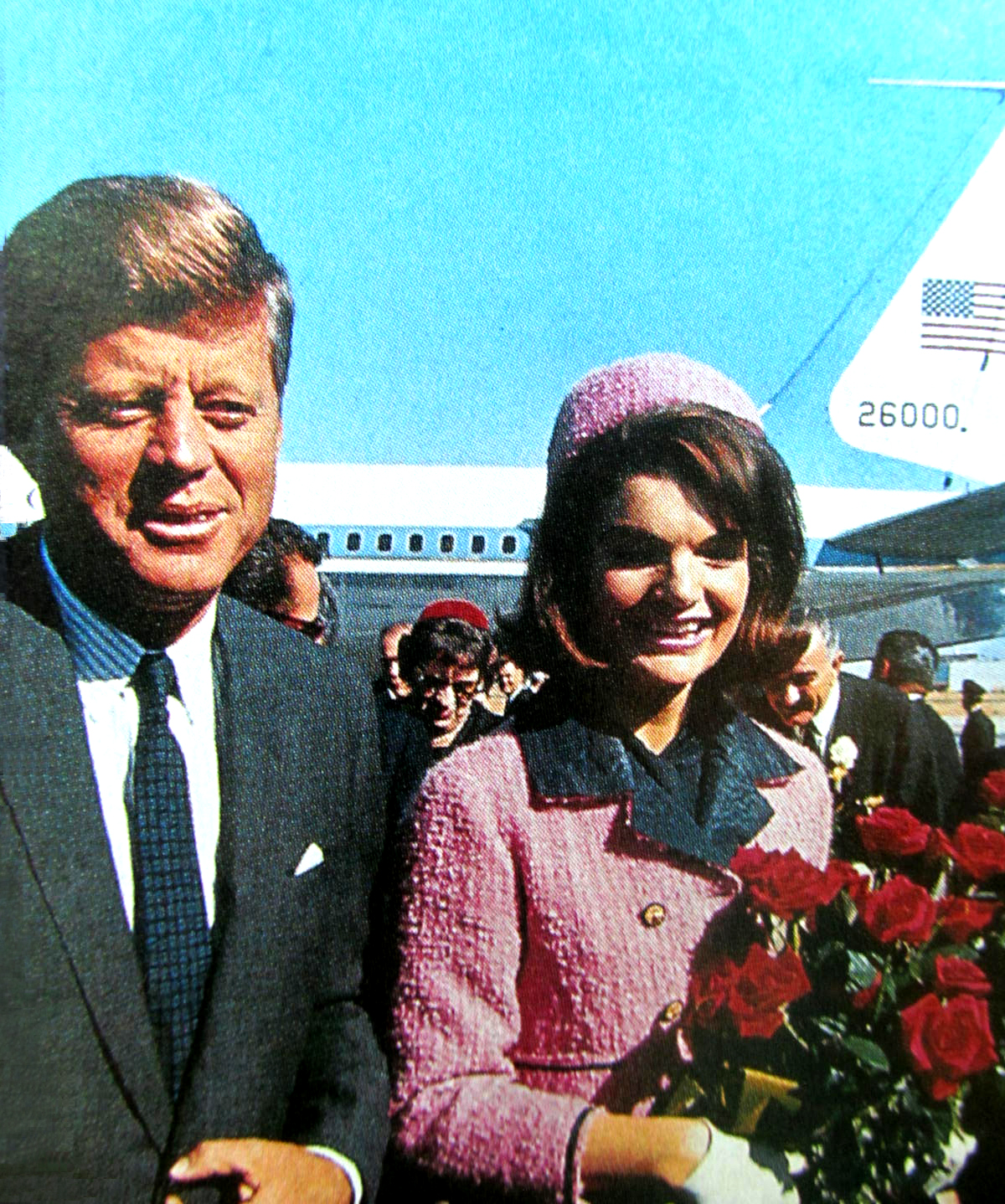
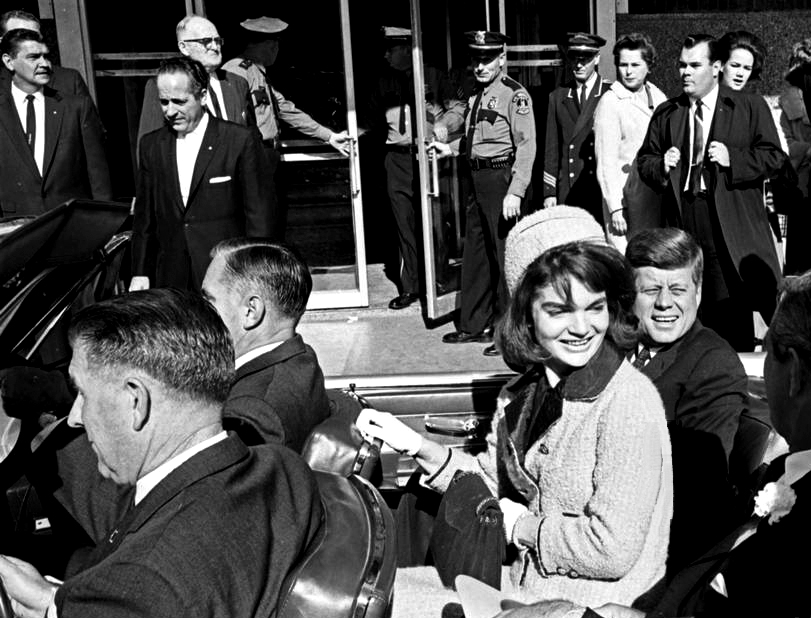
Summarizing the life of the man he first knew as a college student, the Cardinal said, “I know that the primary concern in the mind of Jack Kennedy was what kind of an image he would leave for history as the first Catholic President of the United States. Once, in a private discussion, he made his ultimate aspirations in that respect unmistakably clear to me. And when he made that statement, he was probably thinking of a future Jewish President, or a future President of any faith and any nationality. I recalled this and much more during the course of his funeral, and I said that, for all the people of the United States, he has left for history the greatest image that could be bequeathed to the future.”
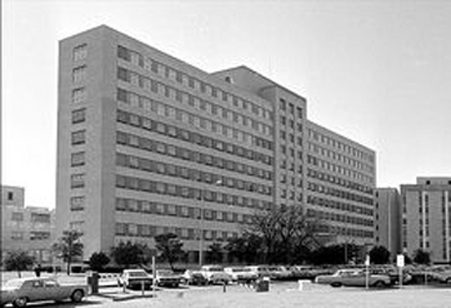
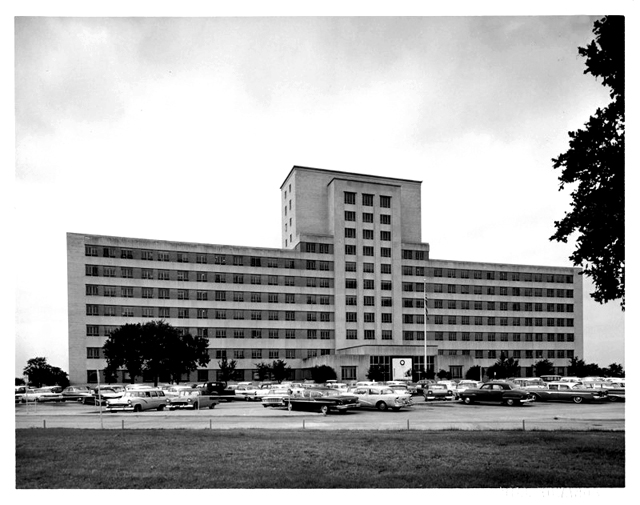

That Evening, the body of our President was removed by the Dallas Corner (with glasses) and both Secret Service and Dallas Policemen waiting for the elevator on the surgery floor to arrive. A crushing moment in the hallway of Parkland Hospital all standing and waiting for what probably seemed an eternity as their brains absorbed the moment at hand and all knowing to well, the results of this assault on our Countries People and President.
It is nearly a year since he has been gone.
On so many days – his birthday, an anniversary, watching his children running into the sea – I have thought, “But this day last year was his last to see that.” He was so full of love and life on all those days. He seems so vulnerable now, when you think that each one was a last time.
Soon the final day will come around again – as inexorably as it did last year. But expect this time. It will; some of us different people than we were a year ago. Learning to except what was unthinkable when he was alive, changes you.
Someone who loved President Kennedy, but who had never know him, wrote to me this winter: “The hero comes when he is needed. When our belief gets pale and weak, there comes a man out of that need who is shining – and everyone living reflects a little of that light – and stores some up against the time when he is gone.
Now I think that I should have known hat he was magic all along. I did not know it – but I should have guessed it could not last. I should have known that it was asking too much to dream that I might have grown old with him and see our children grow together.
So now he is a legend when he would have preferred to be a man. I must believe that he does not share our suffering now. I think for him-at least he will never know whatever sadness might have lain ahead. He knew such of it in his life that it always made you so happy whenever you saw him enjoying himself. But now he will never know more – not age, nor stagnation, nor despair, nor crippling illness, nor loss of any more people he lived. His high noon kept all the freshness of the morning – and he died then, never knowing disillusionment.
“…he has gone… Among the radiant, ever venturing on, Somewhere, with
morning, as such spirits will.” * He is free and we must
live. Those who love him most know that “the death you have dealt
is more than the death which has swallowed you.”
Signed:
Jacqueline Kennedy
Look Magazine, 11-17-1964
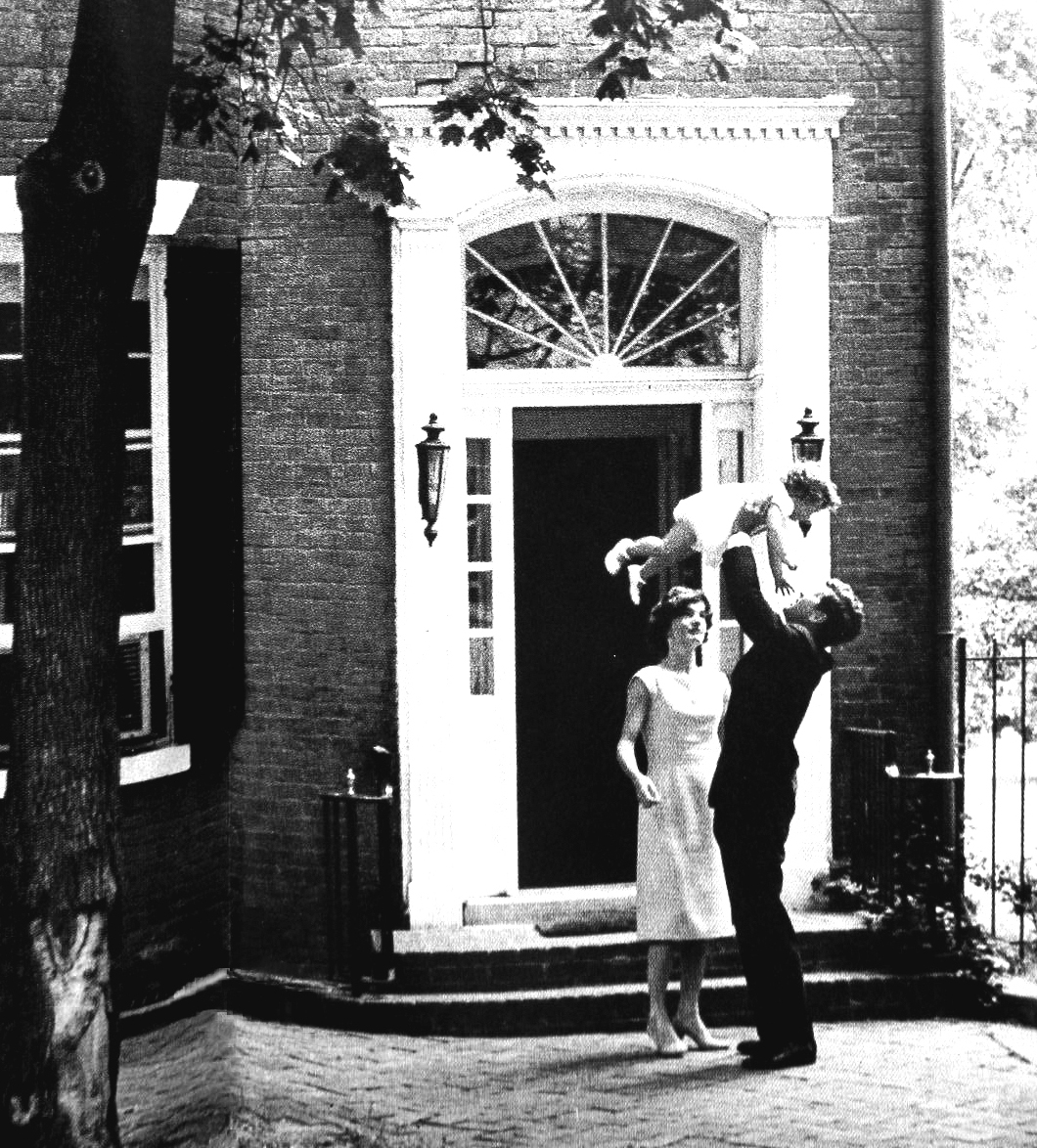
“We observe today not a victory of party but a celebration of freedom – symbolizing an end as well as a beginning - signifying an end as well as a beginning - signifying renewal as well as change. For I have sworn before you and Almighty God the same solemn oath our forebears prescribed nearly a century and three-quarters ago.
The world is very different now. For man holds in his mortal hands the power to abolish all forms of human poverty and all forms of human life.
And yet the same revolutionary beliefs for which our forebears fought are still at issue around globe – the belief that the rights of man come not from the generosity of the state but from the hand of God.
We dare not forget today that we are the heirs of that first revolution. Let the word go forth from this time and place, to friend and foe alike, that the torch has been passed to a new generation of Americans – born in this century, tempered by war, disciplined by a hard and bitter peace, proud of our ancient heritage and unwilling to witness or permit the slow undoing of those human rights to which this nation has always been committed, and to which we are committed today at home and around the world.
Let every man know, whether it wishes us well or ill, that we shall pay any price, bear any burden, meet any hardship, support any friend, oppose any foe to assure the survival and success of liberty...
Let both sides explore what problems unite us instead of belaboring those problems which divide us...
And if a beachhead of cooperation may push back the jungle of suspicion, let both sides join in creating a new endeavor, not a new balance of power, but a new world of law, where the strong are just and the weak secure and the peace preserved.
All this will not be finished in the first one hundred days. Nor will it be finished in the first one thousand days, nor in the life of this Administration, nor even perhaps in our lifetime on this planet. But let us begin...
In the long history of the world, only a few generations have been granted the roll of defending freedom in its hour of maximum danger. I do not shrink from this responsibility – I welcome it.
I do not believe that any of us would exchange places with any other people or any other generation. The energy, the faith, the devotion which we bring to this endeavor will light our country and all who serve it – and the glow from that fire can truly light the world.
And so, my fellow Americans: ask not what your country can do for you – ask what you can do for your country.
My fellow citizens of the world: ask not what Americans will do for you, but what together we can do for the freedom of man.
Finally, whether you are citizens
of America or citizens of the world, ask of us here the same high
standards of strength and sacrifice which we ask of you. With good
conscience our only sure reward, with history the final judge of our
deeds, let us go forth to lead the land we love, asking His blessing
and His help, but knowing that here in earth God’s work must be our
own.
Resource: Life Magazine: A Special Edition from 1963 (undated)
Note to the Reader: In the spring of this year I received a box of newspaper clippings and full pages of newspapers with text and images. Someone in San Diego started collected pages and clippings from local newspapers (cir. 1963) and this material was newly again discovered by my daughter at a Garage Sale on her island Keaau, Hawaii. She re- boxed all and then sent contents to me. Below are just some of the news clippings and one held the words: The San Diego Union, Nov. 63. Samples of these articles and credit to the newspaper is now being noted just above, and will now follow

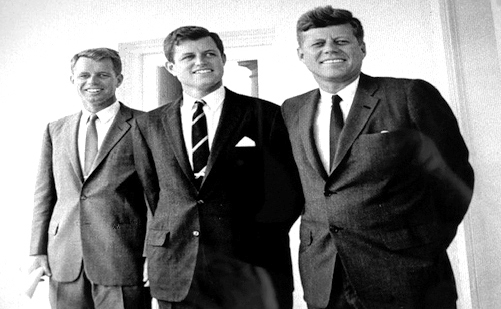
Washington AP. In a closed, flag-draped coffin, President John F. Kennedy reposed today in the historic East Room of the White House. Visits by family, close friends and high officials of the government, including former President Eisenhower, were spaced through the day.
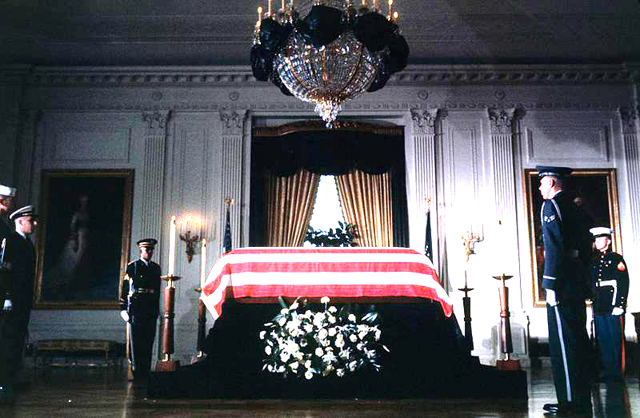
Four tall candles flickered at the corners of the casket. Two priests knelt beside it on prayer benches, their heads bowed in silent supplication to the Almighty. A few feet back from the candles, four enlisted men of the Army, Navy, Marines and Air Force stood at rigid attention. Their bayonets gleamed softly in the light of the three great chandeliers overhead. At the head of the casket on the left, a Navy Lieutenant in full dress stood ramrod stiff, his ceremonial sword sheathed.
Against the casket lay a great spray of lilies and carnations, their white contrasting with the lustrous green leaves of the background.
In an enormous space on a mantelpiece behind the bier, there was a large bouquet consisting simply of rhododendron leaves.
Reporter and cameramen were permitted a brief viewing, and noted at once that the casket was closed, In fact the casket itself could not be seen beneath the flag that draped it. The coffin rested on a catafalque draped in black velvet. White House officials said the casket would remain closed throughout the public viewings.
Before the viewing by members of the Kennedy family began, members of the White House staff filed silently past the casket for a last tribute to their chief.
A horse-drawn caisson, accompanied by ceremonial troops from all the armed services, will carry the body to the Capitol tomorrow and to funeral services on Monday.
There it will lie in state in the Rotunda for viewing by the public in the Capitol; until it is taken to St. Matthew’s Roman Catholic Cathedral. Services will be held at noon at St. Matthew’s with Richard Cardinal Cushing, archbishop of Boston and long-time friend of the Kennedy family, celebrating a Pontifical Requiem Mass.
The final resting place for the President, 46 gunned down as he rode in a motorcade, remained uncertain.
In the early morning hours, the flag-draped casket of the fallen President was brought to the White House. A Naval ambulance carried the casket from Bethesda Naval Hospital, in suburban Maryland, where the body had been taken upon its return from Dallas.
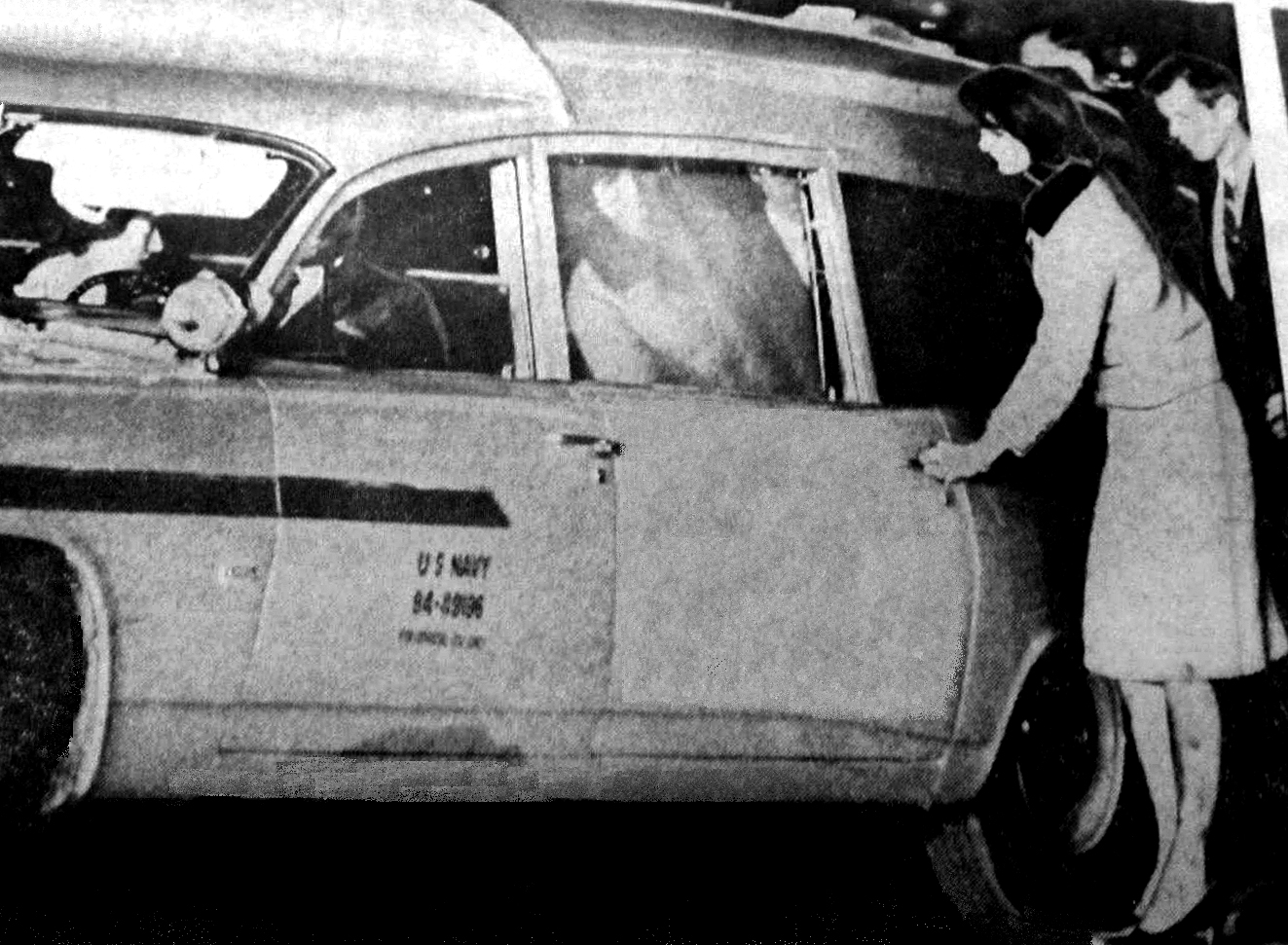
(Raw Image: Note the additional bullet proof window covering of the door, and the blood stains on the left leg and skirt of Mrs. Kennedy. The Presidents body was placed inside through the back door. No Photoshop was applied to this particular image.)
Jacqueline Kennedy reaching above, rode alongside the casket. Her brother-in law, Atty. Gen. Robert F Kennedy, also rode in the ambulance above. At 4:25 am. in the morning, the ambulance pulled through the northwest entrance to the White House grounds as several hundred watched silently. Servicemen in dress uniforms carried the casket into the White House, followed by Mrs. Kennedy and the attorney general.
Former President Hoover, 89 and ailing, expressed regrets that he would be unable to attend, while former President Truman is expected in Washington tomorrow.
Members of the family, Supreme Court Justices, members of Congress and foreign diplomats will all accompany President Kennedy’s body when it is moved from the White House down Pennsylvania Avenue to the Capitol for public viewing shortly.
WASHINGTON (AP) - The grave of President Kennedy was visited yesterday by an estimated 45,000 persons.
The line of visitors formed before the gates of Arlington National Cemetery were opened at 8 am. Those within the cemetery were permitted to remain in line when the gates were closed at 5 pm.
Later this week Princess Grace of Monaco plans to visit the burial site. The former movie star said on her arrival in New York yesterday that she also hopes to pay a condolence call on Mrs. Jacqueline Kennedy at the former first lady’s convenience.
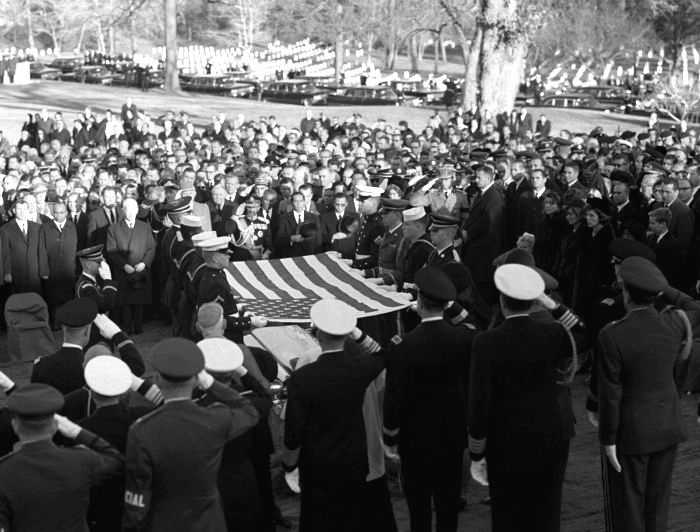
WASHINGTON (UPI) - Broadcasting coverage of the assassination and funeral of President Kennedy cost the television and radio networks 28.7 million, an industry publication said yesterday.
A survey by Broadcasting Magazine showed another $3.3 million was accounted for by commissions to advertising agencies and sales representatives for commercials which were suspended over the period.
Broadcast Magazine said that during the four days of broadcasting more than 2,100 network employees in this country and abroad were involved at one time or the another in working on the story.
The magazine said that, based on the best available estimates, the costs included the $18.8 million lost through elimination of television commercials, $6.8 million lost in radio commercials and $3.1 million for television and radio coverage of the story.
Written From News Services, Washington
President Johnson awarded posthumously to John F. Kennedy today the nation’s highest civil honor “on behalf of the great republic for which he lived and died.” Another posthumous award by Johnson was to Pope John XXIII.
Atty. General Robert F. Kennedy accepted he Medal of Freedom for his slain brother. The assassinated President conceived the award and was to have presented it today to 31 leaders of government, science, business and the arts.
Washington (AP) A home with a history and a warmth, filled with the art she loves, will greet Mrs. Jacqueline Kennedy wf government, science, business and the arts.
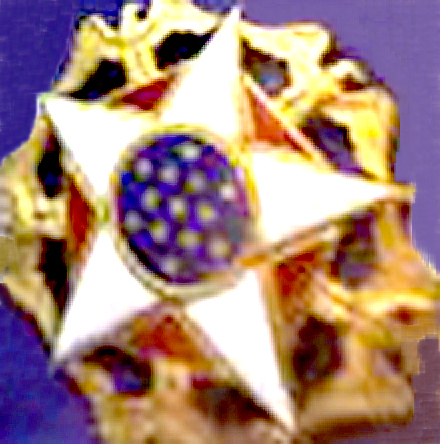
Mrs. Jacqueline Kennedy, widow of the President, watched the ceremony from a small dining room off the White House state dining room. A folding screen shielded her from view of those at the award ceremony.
Johnson read this citation: “John Fitzgerald Kennedy, 35th. President of the United States, soldier, scholar, statesman, defender of freedom, pioneer for peace, author of hope – combining courage with reason, and combating hate with compassion, he led the land he loved toward new frontiers of opportunity for all men and for all time.
Beloved in life of selfless service, mourned by all in a death of senseless crime, the energy, faith and devotion which he brought in his extraordinarily successful though tragically brief endeavors will hereafter ‘light our country and all who serve it – and the glow from that fire can truly light the world.” When she walks into her borrowed Georgetown residence on Friday.
The final words of this citation were taken from Kennedy’s inaugural address earlier as he began his new work in the Oval Office.

Washington (AP) A home with a history and a warmth, filled with the art she loves, will greet Mrs. Jacqueline Kennedy when she walks into her borrowed Georgetown residence on Friday.
The new home for the former First Lady is a three-story red brick dwelling with plenty of room.
Undersecretary of State and his wife Mrs. W. Averell Harriman, who own the house, have turned it over to the former First Lady and her children. The house has 11 rooms and 5 baths.
From the entrance hallway, with etchings by Picasso and Matisse in the stairwell, to the picturesque dormered third floor bedroom, it is furnished for elegant and comfortable living.
The dining room seats up to 18 comfortably.
There are fireplaces in all but one room and the house contains a collection of French, English, and Chinese lacquer furniture and Lowes-toft chinaware. The art collection would be the pride of a museum.
In the rear is a spacious, block-long walled and terraced garden, with boxwood and magnificent magnolia trees and a swimming pool.
Two Iranian rigs (gift of the Shah) are in the entrance hallway, and a Louis XV console with a big carved mirror of the same period of France’s grandeur, Mrs. Kennedy will be in an atmosphere not unlike what she created in the White House.
The history books of Georgetown indicate this house dates back to the same period as the mansion at 1600 Pennsylvania Ave., that she is vacating after almost three years.
It is said to have been built in 1800, the same year President John Adams moved into the unfurnished White House.
It was announced yesterday that Mrs. Kennedy will move into the house on Friday. There is no indication just when President Johnson and his family will take occupancy of the White House.
The Harrimans, who one occupied the governor’s mansion in Albany, NY., bought the Georgetown home last spring. Its prior owner was William Scranton now Governor of Pennsylvania.
Cited San Diegans who display the American flag in honor of President Kennedy should continue to fly it at half-mast until Dec. 21. In March, 1954, President Eisenhower by proclamation designated that the flag remain at half-staff for 30 days for a president who has died.
All US. government and military installations around the world where American flags are flown will observe this 30-day period.
An Editor’s Note: Throughout the land, where-ever the nation gathered in somber tribute to view the last rites of our President, it was clear to all... God was there. Heads of state, religious leaders, military men and the plain folks of the land knew it. So deep was the mourning, the attempt to move closer to Him through prayer and suffering, His presence was sensed as final prayers and rituals were conducted at Arlington Cemetery in Virginia.
You could feel it sitting before your television more than 2,000 miles from a hero’s burial ground, the resting place of 125,000 servicemen who helped this nation persevere.
It was certain that some sign must be forthcoming from Him, to let the world know that Jesus Christ, the Lord God, was witness to the sadness of this day.
Perhaps a non-consuming fire would envelop the flag bearers or the national emblem they held over the coffin containing President John F. Kennedy’s remains.
Then Suddenly… on television screens in every hamlet of this nation, there appeared so striking a sign of the sun’s rays sifting down through the trees of the hallowed ground, that the announcer was moved to utter: “This is no Hollywood shot, it is nature at work.” A nation, nay, a world, knew that without a doubt, He was there.
(Bill Hollohan, San Diego Union 11-30-63.)
By John McLaren, The Copley News Service
WASHINGTON – The assassination of President Kennedy on a Dallas street was a nightmare come true for the Secret Service, the proud agency charged with protecting the President.
The service always had dreaded just such an incident – a shot fired by a sniper from afar snuffing out the life of our chief executive.
Only two years ago a former Secret Service chief, U. E. Baughman, wrote these prophetic words:
“A rifle with a telescopic sight slipped unobtrusively out of any of a thousands windows along the route with plenty of time to aim carefully, and we would have been helpless to protect our charge.”
Baughman was writing about the 1949 inaugural parade for President Truman. But this statement accurately for told the tragic way President Kennedy was to die.
The service is now investigating itself in a painstaking inquiry to find out how – and why- the tragedy happened. The investigation has two purposes: To determine what additional precautions must be taken to guard President Johnson and to provide answers to questions expected from Congress and the nation about what went wrong.
Meanwhile the 400-man service and its chief, James Rowley, aren’t doing much talking. “We’ve just started piecing it together,” spokesman said. “We’re taking it from the ground up. We intend to talk to every person who had anything to do with the Dallas trip.”
One thing, however, is certain: Security procedures will be tightened. When President Johnson steps from the protecting confines of the White House, he will likely be protected, flanked, and followed by agents forming a protective screen.
It is said that all 58 men who form the elite White House detail of the Secret Service would gladly sacrifice their lives for the President. But they never had the chance last Friday. The shots that killed President Kennedy were fired downward from a sixth floor window, and no agent could block them with is own body.
Checking the buildings along the routes the President travels in his motorcades is a mandatory operation for the Secret Service. Whether the textbook warehouse from which the gunman fired was policed beforehand and why it was not under closer surveillance as the Presidents party approached are questions still unanswered.
Secret Service men go carefully over the route of every presidential motorcade, trying to spot every potential source of danger. The federal agents are not numerous enough to do all the security work, however, and many details, such as motorcycle escorts and crowd control are left to the local police.
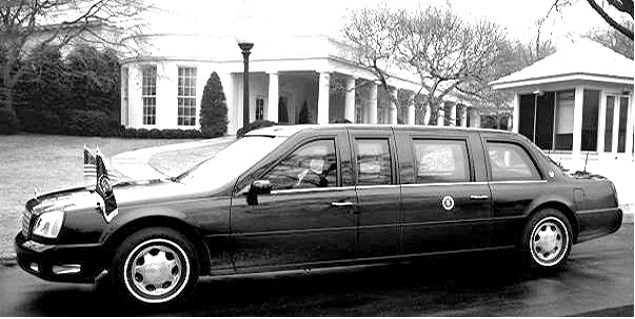
The famed bubbletop limousine in which the President Kennedy was slain and Texas Gov. John Connally wounded, was built in 1961 to Secret Service specifications by the Hess & Eisenhart Manufacturing Co., a custom automobile firm.
The limousine was open at the time of the assignation. Its bubble-shaped plastic dome was missing. Whether the dome could have saved the President is the subject of much conjecture. The device was not bullet proof. Its is tough enough, however, so that a long distance shot aimed at the President might have been deflected by the curved surface. John McLaren
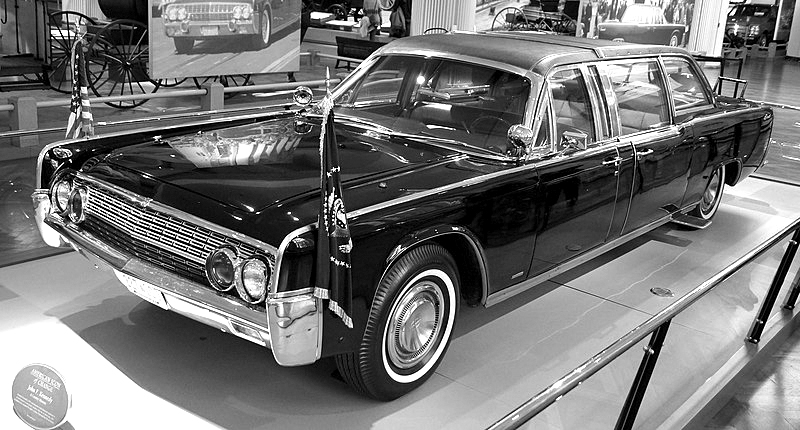
The second part canopy of the roof was removed and windows rolled down at the time of the assignation. The above vehicle as shown is now on display to the public with License Plate No. 227 100.
From the News Services (undated)
Hyannis Port, Mass. Jacqueline Kennedy remained in seclusion today on rain-swept Cape Cod, once the summer playground of her assassinated husband. A driving rain storm pounded the sprawling Kennedy compound.
Jacqueline and her children, Caroline and John Jr., flew Thursday for a sad Thanksgiving reunion with the Kennedy clan. She was expected to return to Washington this weekend.
Condolences Continue to pour into the Kennedy home from all parts of the World.
Postal officials report they had handled more than 185,000 letters and Western Union said 50,000 telegrams had been received.
Yesterday House Democratic leaders introduced legislation providing $50,000 for Mrs. Kennedy to hire secretaries to help her answer her mail for the next six months. The bill would provide for the First Lady with government franking privileges so that anything she mails in her lifetime would be postage-free. All under taking and burial expenses of President Kennedy, including any transportation expenses involved, would also be paid by the government.
Other provisions were for Secret Service protection for Mrs. Kennedy and her two children for a year, with at least two agents assigned to her at all times and funds for an office for Mrs. Kennedy with whatever supplies and equipment needed for six months.
The benefits would be furnished in addition to the $10,000 government pension Mrs. Kennedy gets under a 1958 act, House members said. The House leaders have ordered a vote on the bill Monday.
Yesterday the mother of the late President drove to Boston to see her mother Mrs. John F. Fitzgerald, 98. The latter has not been told of the assassination of her grandson a week ago yesterday.
Editor’s Note: In response to hundreds of requests, The San Diego Union herewith reprints the text of Senate Democratic Leader Mike Mansfield’s eulogy of John F. Kennedy. The eulogy was delivered in the Capitol on Sunday. Mansfield reference to the ring referred to Mrs. Kennedy’s action shortly after the Presidents death.
“There was the sound of laughter and, in a moment it was no more. And, so, took a ring from her finger and placed it in his hands.
“There was wit in a man neither young or old; but a wit full of an old man’s wisdom and of a child’s wisdom and, then, in a moment it was no more. And, she took a ring from her finger and placed it in his hands.
“There was a man with the scars of his love of country, a body active with the surge of a life far, far, from spent and, in a moment it was no more, and, so she took a ring from her finger and placed it in his hands.
“There was a father with a little boy and girl and the joy of each in the other and in a moment it was no more.
“There was a husband who asked much and gave much and, out of the giving and the asking, wove with a woman what could not be broken in life and, in a moment, it was no more. And so, she took a ring from her finger and placed it in his hands, and kissed him, and closed the lid of a coffin.
“A piece of each of us also died at that moment. Yet, in death he gave of himself to us. He gave us of a good heart from which the laughter came. He gave us of a profound wit, from which a greater leadership emerged. He gave us of a kindness and strength fused into the human courage to seek peace without fear.
“He gave us of his love that we, too, in turn, might give. He gave that we might give of ourselves, that we might give to one another until there would be no room, no room at all, for the bigotry, the hatred, prejudice and the arrogance which converged in that moment of horror to strike him down. With these gifts left to us, will our courage take them, Mr. President? “I pray to God that we will.”
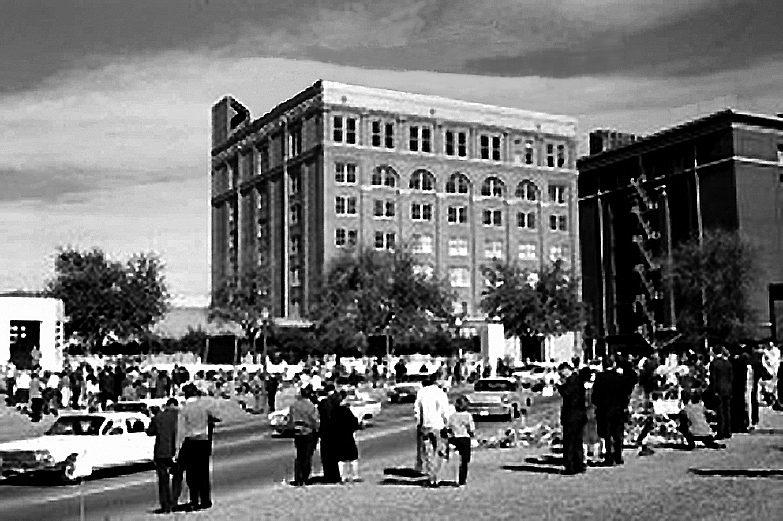
1898: The Southern Rock Island Plow Company built a 5-story building at the northwest corner of Houston and Elm streets in Dallas.
1901: The building burned down after being struck by lightning, and a new 7-story structure was constructed on its original foundation.
1937: The building was renamed the Perfection-Aire Building for the new air-conditioning business that leased it. 1941-1961: The building became the southwest distribution center for Chicago-based grocery wholesale company John Sexton & Co.
1941-1961: The building became the southwest distribution center for Chicago-based grocery wholesale company John Sexton & Co.
1963: The Texas School Book Depository company, a school textbook distribution firm, leased the building with regional textbook publishing firms also officing in the warehouse.
1963: Within minutes of the assassination of President Kennedy, the Texas School Book Depository building became the primary crime scene for the shooting after evidence of a sniper was found on the sixth floor. A Depository employee, Lee Harvey Oswald, was arrested for the murder of a Dallas police officer within 80 minutes of the assassination and later charged with the assassination of the president.
Within hours the building was the focus of shock, grief and outrage. Thousands of visitors to Dealey Plaza came to view flowers left in honor of the fallen president and to photograph or film the Texas School Book Depository building, where a rifle and shells had been found on the sixth floor.
In the 1970 the Texas School Book Depository company moved out of the building. Although briefly owned by a Nashville music promoter who lacked sufficient funds to create a for-profit museum about the assassination, there was no subsequent tenant, and the building remained vacant for several years. A movement in the Dallas community to tear down the structure gained momentum until the Dallas City Council temporarily froze demolition permits.
1977-1981: Dallas County acquired the building and undertook a major restoration and renovation project to create office space on the first five floors. The exterior of the building was restored to its 1901 appearance.
1981-1986: The Dallas County Administration Building was dedicated on March 29, 1981. A Commissioners Courtroom, the seat of Dallas County government, was opened as well as office space on the second floor. County offices on the third, fourth, and fifth floor followed during Phase Two of the renovation, completed in 1986.
During this time, the top two floors, including the infamous sixth floor, remained empty.
1989: After a long decade of controversial development and community soul-searching, on Presidents Day (February 20, 1989), The Sixth Floor Exhibit opened as a response to the many visitors who come to Dealey Plaza to learn more about the assassination. The historical exhibition on the sixth floor highlights the impact of Kennedy’s death on the nation and the world. Two key evidentiary areas on the sixth floor were restored to their 1963 appearance.
2002: The Museum opened the Seventh Floor Gallery. This flexible space now provides an additio nal 5,500 square feet for innovative exhibitions, special events and public programming. The Seventh Floor Gallery has showcased historic photographs, artwork, presidential campaign commercials, home movies, and unique artifacts through a series of traveling and in-house exhibitions.
Present: Every year, some 350,000 people continue to visit the former Texas School Book Depository building – home to The Sixth Floor Museum at Dealey Plaza – to remember and reflect on the events of November 1963.
More information about the history of the Texas School Book Depository building and the development of The Sixth Floor Museum can be found in the book, Assassination and Commemoration: JFK, Dallas, and The Sixth Floor Museum at Dealey Plaza (University of Oklahoma Press, 2013), available in the Museum Store + Cafe and Museum Bookstore.
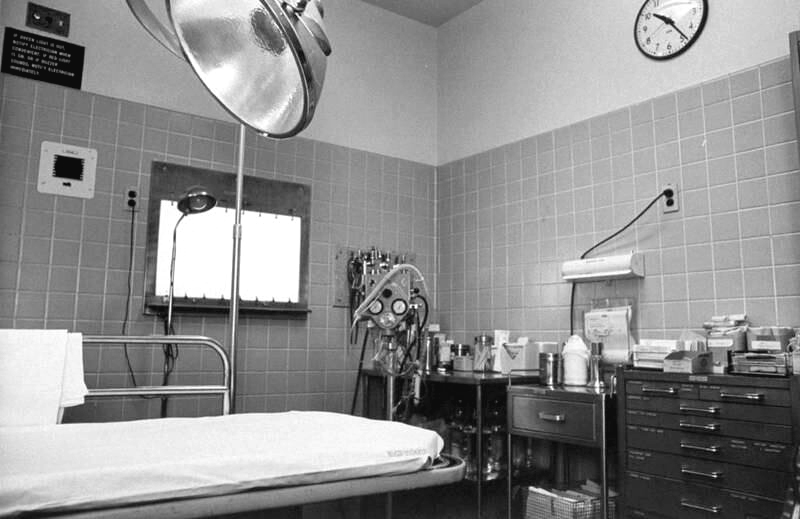
The O. R. of the old Parkland Hospital where the President could not be saved and being surrounded by many physicians who were helpless in that critical moment. An older image of the hospital as look before the renovation and upgrade of equipment and interiors. (below)

Today, officials with Parkland Health closed the doors to the former Parkland Memorial Hospital, thus signifying the start of a 24-month process that will end with the building’s complete removal from the site.
The storied structure where tens of thousands of newborns let out their first cry and countless individuals recovered from accidents and illnesses welcomed its first patient on Sept. 25, 1954. Sixty-one years later, on Aug. 16, 2015, the last inpatient was wheeled across the Mike A. Myers Sky Bridge into the new state-of-the-art Parkland hospital.
The multi-step process will take more than a year and will include hazardous materials abatement, including the removal of asbestos, a common building material used through the 1980’s, followed by piece-by-piece demolition of the building. Demolition, which is being handled by the joint venture firm of Beck – EJ Smith, is expected to be completed in November 2023. Construction will then commence on an administration tower that will house Parkland staff who are currently occupying leased space in numerous Dallas locations.
For Grady Portis, Sr., 60, the building has significant meaning. Not only was he born in Parkland, but it has been his work home for the last 22 years. As one of Parkland’s Life Safety Coordinators, Portis was one of the last employees stationed in the former hospital.
“It’s a little sad that the building is coming down,” Portis said. “There’s so much history. I can remember my grandmother bringing me to the Emergency Department when I was just a kid and had gotten hurt. On my last birthday [in March], I went up to the Labor & Delivery area and thought ‘this is where my life began!’”
Still Portis understands that time has taken its toll on the aging facility.
The building is no longer suitable for contemporary healthcare use. The deterioration of its mechanical, plumbing, electrical and life safety systems, and the high cost of ongoing electrical power consumption even in its “mothballed” state led Parkland leaders to make the fiscally sound decision to demolish the building.
“The building is only barely viable for administrative operations, but because of its age and the lack of availability of parts for many of the mechanical systems, it’s time to make room for a building that is projected to save the Dallas County taxpayers about $3.4 million in annual lease costs,” said John Raish, Parkland’s Senior Vice President of Support Services.
Raish also noted that even though the former hospital is where President John F. Kennedy died, the building was never designated as a historical site, and the emergency department had been renovated numerous times since 1963.
“Every year, especially in November, we receive inquiries from people asking about Trauma Room 1, but it hasn’t been in existence for years,” Raish said. “The entire room was purchased by the federal government decades ago and all of its contents are in a secure location near Kansas City, Missouri.”
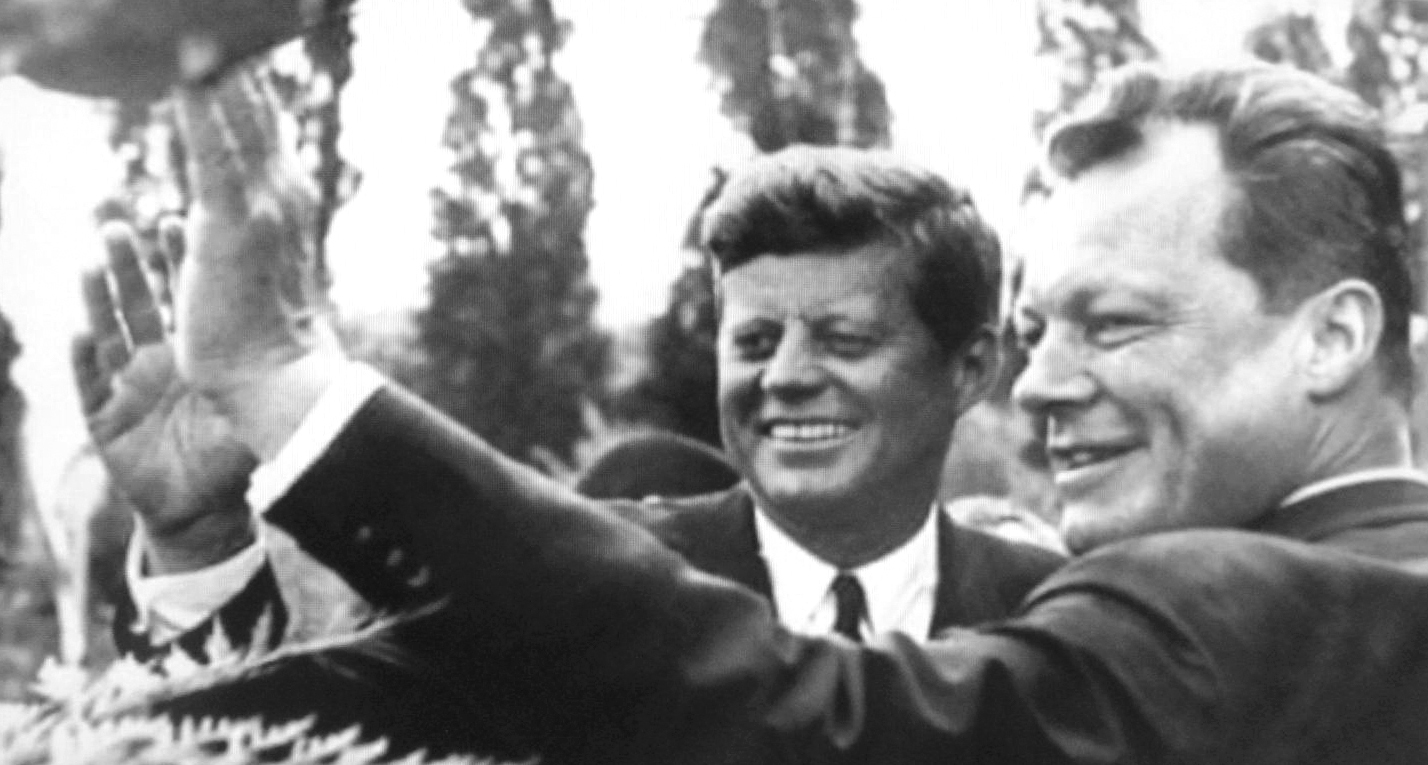
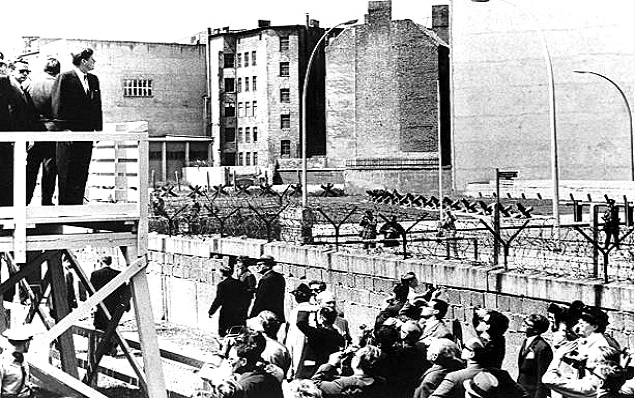

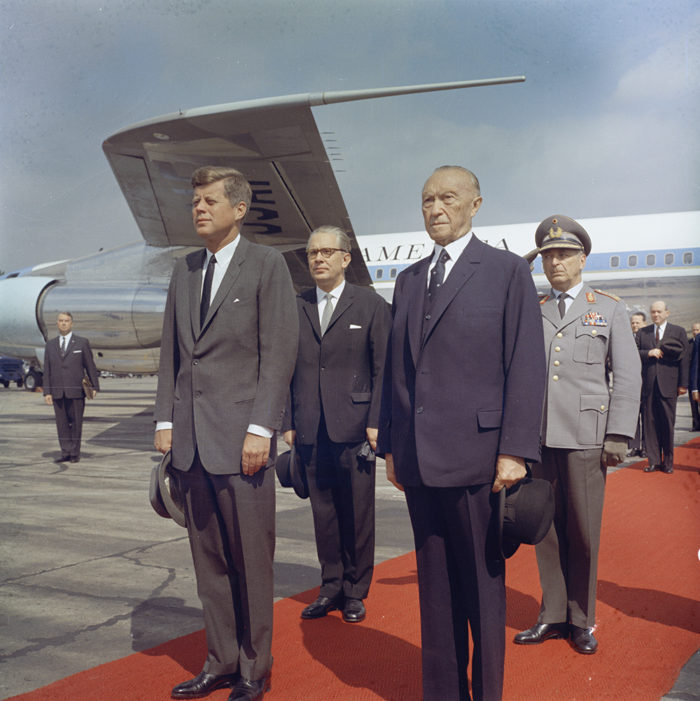
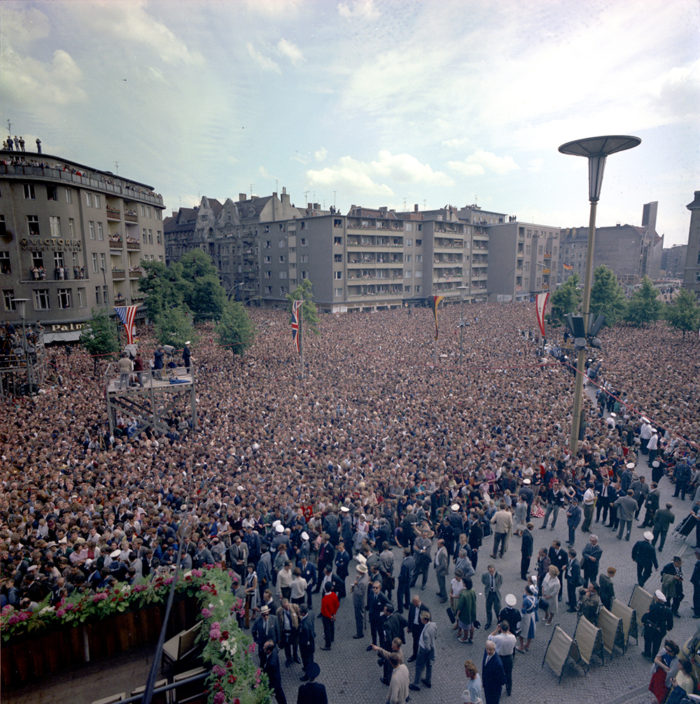
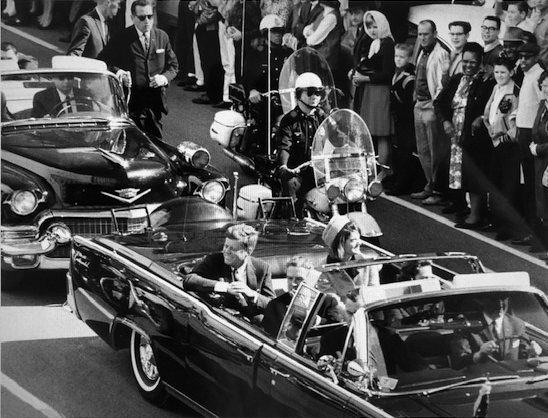
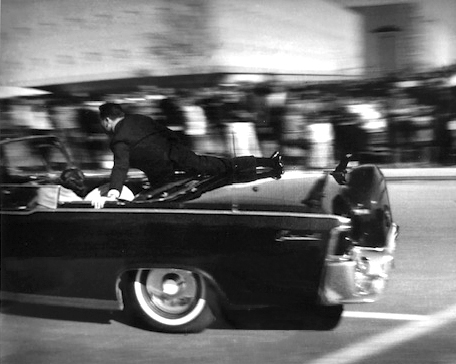
San Diego Evening Tribune – Evening Home Edition (11-29-1963)
DALLAS (UPI) - It now is possible to reconstruct in detail the events that took place in Parkland Memorial Hospital one week ago today shortly after President Kennedy was mortally wounded by an assassin’s bullets.
The first call came to Parkland from the Dallas Police Department. “The President has been shot. He is on the way to Parkland.”
Surgical teams sprang into action.
Dr. Charles James Carrico, a resident in surgery, was in the emergency room when a secret serviceman burst through the swinging doors. A second one, with a sub-machine gun cradled in his arms, was on his heels.
The first agent asked for two portable hospital carts. He called them “stretchers.” One for Gov. John Connally, the other for the President.
The agent with the gun was so agitated, his face contorted with emotion, that hospital personnel were afraid that he might open fire at any moment.
“Everybody clear out of here,” he shouted. Ambulance driver Aubrey Rike, 25, and his assistant Dennis McGuire ducked behind a desk. Two student nurses scrambled to the floor.
A man in a business suit dashed in. The secret service caught him with an uppercut.
Slammed back against the gray tiled wall of the emergency ward, the man slowly slid down to the floor, unconscious. Seconds later, still dazed, he reached for his wallet.
“I’ve got to call (J. Edgar) Hoover.” He said, flashing his FBI credentials to the secret serviceman.
In moments the portable carts were wheeled into the emergency operating Room No. 1. Connally was first. Then the President, with Mrs. Jacqueline Kennedy walking beside the cart, holding his head, her pink suit bloodied.
Connally was wheeled into Room No. 2, an identical 15 by 10 foot room directly across the hall.
Vice President Johnson walked in, with his hand on chest. Sen. Ralph Yarborough, D-Tex., who had been riding in the motorcade with him, was in tears.
At first some feared Johnson might have suffered a heart attack.
The operating table in Room No. 1 had been shoved out of the way. The doctors were moving so swiftly they did not want to take the time to lift the President off his cart.
Carrico, the first man in the room, forced a breathing tube down the President’s windpipe as Dr. Malcolm Perry, an assistant professor of surgery, dashed in. Perry decided further help in breathing was needed. The fist bullet had opened the windpipe. Dr. Perry inserted a breathing tube through the bullet hole.
Dr. Charles Baxter, assistant professor of surgery and director of Student Health Science, then also arrived at this time. Mrs. Kennedy still was in the room. Dr. Baxter glanced at her and said, “I believe you had better step outside.” (probably to keep her from seeing the procedures that yet may have to be done to keep the President alive).
There were five staff members hovering around Kennedy at this time. Whenever one doctor made an observation, the others immediately agreed.
Mrs. Kennedy turned to a White House aid in the corridor and said “Call a priest”.
The aid relayed the message to Steve Landregan, assistant to the hospital administrator C. J. Price. Landregan immediately called the nearby Holy Trinity Catholic church.
More doctors rushed to Kennedy’s side. There were 15 in all. Besides Perry, Carrico, and Baxter, there were Drs. William Kemp Clark, chairman of neurosurgery; Robert McClelland, assistant professor of surgery; M. T. Jenkins, chairman of anesthesiology; Fouad A. Bashour, associate professor of internal medicine; Adolph Giesecke, clinical associate in anesthesiology; Paul C. Peters, assistant professor of urology; Ronald C. Jones, senior resident in surgery; Charles Crenshaw*, surgery resident; Gene Akin, anesthesiology resident; Jackie H Hunt, anesthesiology fellow; Don Curtis, oral surgery resident and Kenneth Slayer, surgery resident. (* No relation to this complier.)
Carrico remembered reading that Kennedy suffered adrenal deficiency and immediately administered hydrocortisone.
Jones began a “cut-down” on Kennedys left arm to insert a catheter – a device to force more blood into a vein and keep the passage open. Curtis completed the same procedure on the left leg.
Lactated ringers solution (a crystalloid solution sometimes called white blood and used until whole blood can be obtained) was pumped in. In seconds, a technician from the blood bank arrived with “O” negative blood (fm. a universal donor) and it was started.
To feed the blood faster, hand pumps were used. By now, the cart had been elevated at the foot end to help the blood get back to the heart.
Then one of the doctors noticed a frothing of the blood in the neck wound. “He’s bubbling air”, the doctor said. This means a hole in the lung.
Peters ad Baxter immediately inserted a tube into the right upper part of the chest, just below the shoulder, to re-expand the lungs and keep them from collapsing. Perry and Jones at the same time inserted a similar tube on the left side.
Doctors and nurses raced in and out. Each time the operating room door opened, Mrs. Kennedy tried to look into the OR
“What is happening,” she would ask. “How is he?”
Clark, the neurosurgeon, had run all the way from the medical school (nearby). He was one of the last of the team to arrive. He raced through the emergency room door not more than five minutes after the President was brought in.
Clark looked down at the President. His eyes were open staring back, but now sightless.
Clark had a “torpedo” hooked up immediately to the President. This is a small; machine with a scope that shows a heartbeat in waves as a little green light traveling from, one side to the other on its screen. The dot of light moved straight across the screen in a hopelessly steady line. Clark looked up at Perry and said: “It’s to late, Mac,” he said.
But Perry grabbed a stool, placed his knee on it to give him leverage and began giving Kennedy closed chest massage – using his fist in a rocking, pressing motion over the breastbone to provide, if possible, a 60-70 per minute beat. He and Clark took turns.
A more sensitive cardiotachy scope was brought in by Bashour.
Electrodes from the machine were attached to Kennedy’s left arm. But the green pinpoint of light on the scope did not waver the tiniest fraction of an inch.
An attendant was standing by with two rods that can shock a faltering heart onto beating, but then put them away. The President was dead. He had been dead for minutes, probably before he even reached the hospital.
Jenkins, monitoring the oxygen equipment, then turned the valves off. The President was dead. He probably had died before ever reaching the hospital. Now motionless, dressed only in his trousers, shorts and back brace for his ailing back.
Silence now filled the operating room in deep respect at this very moment
Baxter got a fresh sheet. He and Jenkins tenderly pulled it across his body and up and over his face. Kennedy’s coat, shirt, undershirt and the tie had all been folded and place on one of the steel shelves lining the wall. The floor was littered with empty bottles, bloody bandages, boxes that had contained sterile dressings, and bits of tubing. At the foot of the cart, among the litter, were the President’s shoes. A doctor gently picked them up and place them with his coat.
“The priest is outside,” someone said.
There was nothing more the doctors could do.
They opened the emergency room door. The priest, the Rev. Oscar L. Huber, C.M., was waiting.
Mrs. Kennedy stood up. Two White House aids stood on either side of her. She walked inside the OR. and toward the cart where her husband lay. The aids stayed outside.
At the foot of the cart, Mrs. Kennedy stopped for a moment. The President’s feet were flush with the end of the cart, uncovered by the sheet which had been pulled up over his face.
Mrs. Kennedy then reached out, touched his right foot and then bent down and kissed it. Then she walked along side the cart and stood by the President’s right shoulder.
Father Huber then entered the Operating Room moments after her. He stopped beside her, glanced up, then stepped around her and stood at the President’s head. With great respect, he pulls back the sheet un-covering the Presidents face.
(Attn. Reader - Compilers Notes:) The article now ends at this point and no further information was printed or provided. Having served with several Priests and Bishops at the high Altar in churches within my community, the words then spoken at this time from memory or even if read allowed, can still be found today in all Missals and Books of Common Prayer.)
Dallas (UPI) STAFF WRITER: Bryce Miller
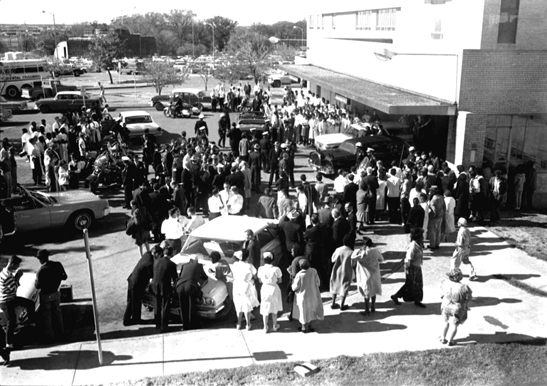
Hospital Staff wait for the remains of the President to be placed inside the White vehicle backed into the loading area at the rear of the hospital.
Compilers Note: This topic will now end with a part II consideration and treatment of President John F. Kennedy’s last day in Dallas, his Assassination, and return to Washington and subsequent Funeral. For next years new posting, I am considering the Life and Times of General Douglas MacArthur. A writers Credit for all textural information above (and in part I of last years post up), will always be noted if it were available, for both the textural or the visual entry of an illustration, that were utilized in last years and this years part II post up.